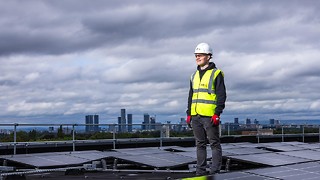Modified crops – modified perspective
The genetic modification of crops is a hugely debated topic – Serena Qiao explores why GM crops deserve (and need) a second chance in the court of public opinion

Just over 20 years ago, a group of environmental activists destroyed experimental GM maize being grown on a Norfolk farm in a landmark act of protest, which brought genetically-engineered crops into the public eye, and was followed by global demonstrations and the adoption of severely restrictive legislature by the EU. Whilst some of the major food-producing countries of the world have become more open to genetically-engineered crops, public attitudes still remain largely hostile. In the UK, 40% of adults surveyed in 2012 believed the government should not be endorsing the use of genetically-engineered crops. These expressions of distrust largely stem from a lack of understanding surrounding genetically-engineered crops – a survey in 2019 found that only 32% of UK adults felt informed about GM crops, and misinformation spread by anti-GMO campaigns has done nothing to alleviate this.
“In reality, the facts of genetic engineering are far simpler than such campaigns would make them appear.”
In reality, the facts of genetic engineering are far simpler than such campaigns would make them appear. Earlier efforts mainly relied on the use of the bacterium Agrobacterium tumefaciens to introduce foreign DNA into the genome of a plant embryo, and the use of antibiotic-resistance marker genes to select transformed plants. This initially gave rise to fears of spreading antibiotic resistance through genetic engineering, although these marker genes have generally been replaced by plant-derived markers in the transformation process.
With the advent of CRISPR-Cas9 technology, however, engineering of plant genomes has become significantly easier. CRISPR-Cas9 utilises a mechanism found in prokaryotic immune systems, in which characteristic DNA sequences of potentially harmful bacteria are “stored” in a cluster of sequences, known as CRISPR (Clustered Regularly Interspaced Short Palindromic Repeats). These sequences can be transcribed and used to guide the DNA-cleaving activity of the Cas9 protein – in genetic engineering, guide RNA for a locus in the plant genome is used to target cuts. CRISPR-Cas9 technology is proving crucial in genetic engineering, thanks to the ease with which endogenous genes can be edited without inserting foreign DNA, which helps the public image of genetically-engineered crops.
But whilst health risks of genetically-engineered crops on the market have been rigorously examined and disproved, these crops are not without their faults. One of the greatest risks posed by transgenic crops is the potential for transgene flow into wild crop relatives, potentially conferring pest or herbicide resistance. Whilst experimental crops are isolated to reduce this risk, this is often not possible for commercial crops, and evidence suggests some small-scale spread of transgenic traits occurring around fields of transgenic crops. The difficulty in preventing transgene spread, however, is that the methods used – for instance, pollen sterility – can prevent farmers from harvesting and replanting seeds, forcing them to repeatedly buy expensive seed from the developers. This may create a financial barrier to the benefits of such crops for those who might need them most.
Yet with the world population set to hit 8.1 billion by 2025, global solutions are now required to meet the challenges of feeding the growing population in an increasingly adverse climate. Given that roughly 37% of habitable land area is already used in agriculture, the capacity for further expansion is limited, and so increasing the efficacy of crop growth is therefore needed to meet demand. This will likely require the rapid improvement of crops through genetic engineering, with advances in adapting existing plant responses to abiotic stress – for instance, increasing the production of osmoprotectants that protect protein structure in drought conditions – likely to prove crucial in improving crop productivity whilst minimising strain on land and water resources.
Despite the risks, the improving reliability of transgenic crop isolation and the benefits of genetically-engineered crops make a compelling case for extending their use. This is especially true for countries experiencing massive population growth, which often also bear the brunt of climate change – so what is hindering this?
You don’t have to look any further than the case of Golden Rice for the answers. The poster child of the genetically-engineered crop movement, Golden Rice was initially developed in the early 2000s as a transgenic rice strain with a Vitamin A content sufficient to provide 80-100% of the RDI in a single cup of rice. This was a solution developed to combat the lack of the vitamin in the diets of many developing countries, with a third of children worldwide estimated to be Vitamin A deficient, leaving them at high risk of death or blindness. Given repeated testing proving both the efficacy and the safety of the rice, it would seem a foregone conclusion that its use in filling the coverage gaps in vitamin supplement distribution would be widely approved. Yet to this day, not a single crop of Golden Rice has been grown outside of experimental trials.
The reasons for this can be traced back to the legislation governing genetically-engineered crops, such as the Cartagena Protocol, which prevents the introduction of new biotechnology should it pose a risk to human or environmental health. Despite very low rates of gene flow from cultivated rice to wild species, and limited evidence to suggest the transgene would persist in wild populations, this protocol was used to ban the introduction of Golden Rice in the EU, which, in conjunction with Greenpeace campaigns, fed fears surrounding the unsafe nature of the crop. However, rulings in recent years appear to be turning the tide; earlier approval from the health authorities of the US, Australia, New Zealand and Canada has been followed by approval in the Philippines and impending approval in Bangladesh, which hopefully signals the start of Golden Rice growth in countries affected by Vitamin A deficiency.
“The challenge for the future lies mainly in the general public’s understanding and perception of genetic engineering”
Although progress is being made in the introduction of genetically-engineered crops, the future of research and development in crop engineering is looking dim. With recent reclassification of GM crops by the EU to include gene-edited crops, those edited using CRISPR-Cas9 are now as severely restricted as transgenic crops. This comes at a time when effective solutions for food production are needed more than ever, and so immediate action is needed if genetically-engineered crop development is to continue. The challenge for the future lies mainly in the general public’s understanding and perception of genetic engineering; if improved, this could have considerable influence in producing a more considered approach to GM crop legislation – cutting the red tape and allowing the benefits of genetically-engineered crops to reach those most in need.
 News / Uni offers students £55k in payouts31 October 2025
News / Uni offers students £55k in payouts31 October 2025 News / Uni error forces deeper spending cuts31 October 2025
News / Uni error forces deeper spending cuts31 October 2025 News / Students launch women’s society excluding trans women31 October 2025
News / Students launch women’s society excluding trans women31 October 2025 News / Students allowed to use AI, says new uni guidance31 October 2025
News / Students allowed to use AI, says new uni guidance31 October 2025 News / College rowing captains narrowly vote to exclude trans women31 October 2025
News / College rowing captains narrowly vote to exclude trans women31 October 2025










